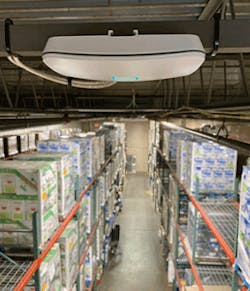Latest from 5G/6G & Fixed Wireless Access/Mobile Evolution
With the entire world currently encouraged to be safer-at-home, many of those classified with "non-essential" jobs are now working from their homes. And those who have lost their jobs are turning to the Internet to look for employment or increase their education in their existing field or even expanding their knowledge outside of their profession to switch careers. In doing so, everyone is realizing the importance of the now-called 4thUtility: the Internet. Just like flipping on a light switch, or turning a faucet on for water, network connectivity is an expected deliverable.
Can you imagine if this pandemic occurred 20 years ago, when high-speed Ethernet communication was not established?
The paradox of online communication has just been ratcheted up. Internet — both wired and wireless networks — face immense pressure to deliver reliable connectivity as schools and businesses have shifted their day-to-day operations out of the workplace and into homes. Think of the media-rich and mission-critical applications, which have become part of everyone’s daily routine: video conferencing, streaming videos, online learning, news reports, telemedicine, shopping online, to name just a few.
InvisiLight® Solution for Deploying Fiber
April 2, 2022Go to Market Faster. Speed up Network Deployment
April 2, 2022Episode 10: Fiber Optic Closure Specs Explained…
April 1, 2022Food for Thought from Our 2022 ICT Visionaries
April 1, 2022Infrastructure is an essential element in all our lives as it is everyone’s link to the world. While the nation is slowly re-opening, the cable contractors and suppliers are answering the demand for the installation of more network connections, for both commercial and private use.
Challenges and Solutions for Wi-Fi
Technology evolution waits for no one. As we are sitting on the edge of 5G, which will double the speed of 4G, and the next generation of Wi-Fi standards, wireless devices have become critical lifelines. Once students go back to school and businesses reopen, the public will be demanding more connections in every space and in every environment.
With the evolution of higher speeds and bandwidths, network system designers are facing a big challenge to deliver this technology over the existing Category 5e/6/6A copper infrastructure.
Here are some trends and challenges in wireless technology identified by the Dell’Oro Group Ethernet Switch study:
- Wi-Fi has exceeded the capacity and data rates of wired networks.
- There is an estimated 6x growth in mobile data traffic (2017-2022).
- More than 5.6 billion 100BASE-T and 1000BASE-T switch ports have shipped in the last 20 years with another 2.4 billion ports expected by 2022.
Figure 1.
The Ethernet Alliance, which consists of more than 45 manufacturers and suppliers, has banded together to enable widespread deployment, evolve specifications, and facilitate interoperability for 2.5G/5G BASE-T and beyond. WiFi-6 (IEEE 802.11 ax) will require upwards of 10 Gb/s speeds, creating a Gigabit bottleneck in the infrastructure from the switch to the device. (See Figure 1.)
While the switch manufacturers are developing active equipment to provide both power (Power over Ethernet) and multi-gigabit technology overall 4 pairs at higher speeds, contractors are faced with providing connectivity and pathways out to these devices. Providing connectivity to many locations past the standards-based 100-meter rule can be a daunting design nightmare because many wireless devices are located in remote areas: across campuses, parking lots, warehouses, airports, and sports arenas.
Essential Pillars of Planning
Planning is the most important aspect of the infrastructure for every real estate. Too often, many criteria for futureproofing the network is minimized due to lack of foresight.
The 4 essential pillars of planning the infrastructure include:
Pillar 1. Wireless pathways should be a part of the design phase.
Pillar 2. Install as much conduit for future provisioning to be able to add robust connectivity.
Pillar 3. Factor in as much cabling as needed for current and future applications.
Pillar 4. Ensure there is enough power in the telecom room for future active equipment changes to be able to push the signal as far as possible to the devices.
An additional consideration is now necessary in these pillars: Lengthonomics –extending the cable distances without having to install additional telecom rooms or intermediate enclosures. This could be achieved with a cable that can more than double the distance of standard category cables (shielded, unshielded, or outside plant) up to 260 meters (850 feet). Ideally, it would support all 4 types of PoE, from Type 1 which provides 15W from the powered source equipment (PSE) over 2 pairs, all the way up to Type 4, which provides 90W from PSE through all 4 pairs.
Like this Article?
Subscribe to ISE magazine and start receiving your FREE monthly copy today!
One solution, the GameChanger Cable™, does this with an increased gauge size (22 AWG), carefully designed twisting, and incorporating specialty materials optimized for long-distance Ethernet applications from the switch to the device.
The newest wireless industry standards also recognize that two Category 6A cables should be pulled to each WAP to provide enough data and power (PoE). By installing 2 of these cables, higher bandwidths and further distances are supported. Having the cable in place in the ceiling makes future connections fast and easy. (See Figure 2.)











